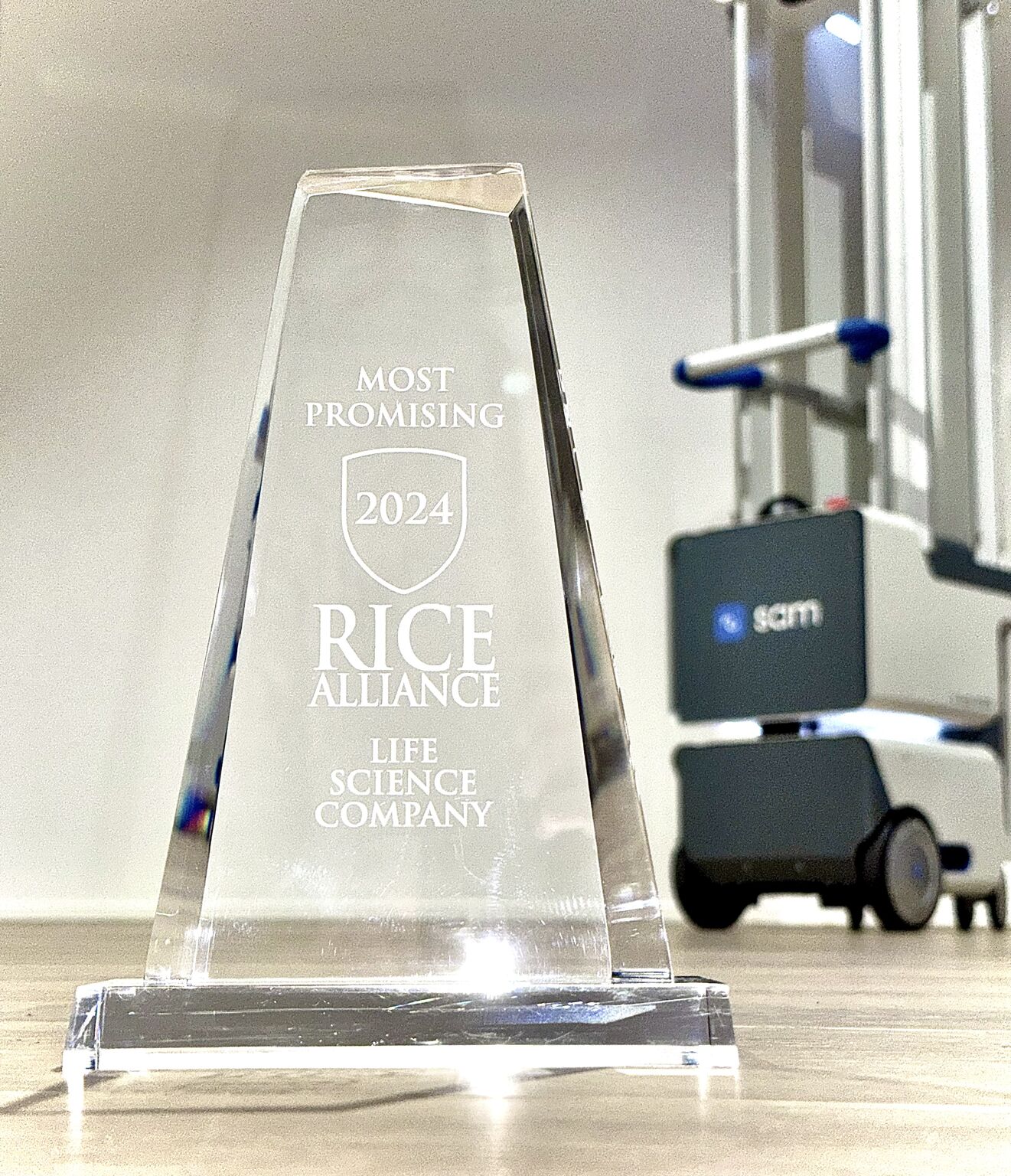Robot SAM at Haga Hospital features in national newspaper
At first glance, a hospital room may appear clean, but that doesn’t mean all dangerous bacteria are gone. When disinfecting isolation rooms, cleaning staff at the Haga Hospital are assisted by Robot SAM. A doctor, an infection prevention expert, and the developer explain the benefits and importance of SAM. “More and more bacteria are becoming resistant to antibiotics, causing 700,000 deaths worldwide every year.”

Let’s start with some clarity: there is an important difference between cleaning and disinfecting. In the hospital, cleaning is done with microfiber cloths and water. "These cloths have specific properties; the fibers loosen the dirt and absorb it. These properties are lost when cleaning agents are added to the water,” says Simone van Rijn, Infection Prevention Expert at Haga Hospital. You won’t find any cleaning staff using scented soapy water here.
The two hundred cleaners in the hospital use a new, clean cloth for every room. "Otherwise, you’re moving the microorganisms from one place to another. I explain to staff that a virus doesn’t just jump off you at the door. You can’t see them, but they’re there. And before you know it, you’re taking it with you to another room or home.”
Invisible
Once a room has been cleaned, it can then be disinfected. To tackle those invisible bacteria, fungi, and viruses, there’s a special disinfection team at the Haga Hospital. They are assisted by Robot SAM, who disinfects isolation rooms, for instance, where a patient with Measles has stayed or when the Norovirus is going around.
The robot, developed by Loop Robots from Delft, uses UV-C radiation to eliminate unwanted pathogens so they can’t multiply and spread. “SAM is a tool for the cleaners,” says Per Slycke from Loop Robots. “There are more hospitals where SAM is used, but Haga is leading the way. Based on our data about which hospitals are clean and safe, Haga ranks in the top 3.”
Sam is set to work via a tablet from another room and then disinfects the room in twelve minutes. Slycke emphasizes the importance. "More and more bacteria are becoming resistant to antibiotics. It’s like the climate crisis; if we don’t do something, things will go wrong. The trend is very clear."
"More and more bacteria are becoming resistant to antibiotics. It’s like the climate crisis; if we don’t do something, things will go wrong. The trend is very clear."
By deploying SAM, the hospital uses fewer chemical disinfectants. The biggest advantage is that Sam disinfects better than is possible by hand. Van Rijn: "Research shows that when cleaning is done manually, 40 percent of the room isn’t reached. It’s still a human process, where sometimes things are missed."
For example, if that’s the doorknob, remote control, or an alarm display and the next staff member or patient touches it, microorganisms can spread further, with all the consequences that entails. After SAM has been used, more than 90 percent of the room is reached. SAM now disinfects five to ten rooms daily in the Hague hospital using UV-C radiation. SAM doesn’t disinfect the operating rooms (OR) yet, simply because SAM is already very busy and cleaners also need to be trained to operate the device.
"The deployment of SAM is indispensable."
Radiation
Currently, there are ten staff members who can put SAM to work via a tablet in another room. The staff can continue their own work in another room because UV-C light is harmful in direct contact. The machine captures the room and disinfects it. In twelve minutes, a room is ‘Sammed,’ as they now say in Haga.
The extra disinfection by SAM is particularly important in the hospital because of the vulnerable people staying there, explains microbiologist Nathalie van Burgel. For healthy people, it’s not dangerous to come into contact with bacteria now and then. What is dangerous, however, is that more and more bacteria and fungi are becoming resistant to antibiotics. According to the World Health Organization (WHO), 700,000 people die annually worldwide from so-called drug-resistant diseases. “The WHO has calculated that by 2050, infectious diseases will be the number one cause of death. This means we are going back to the time before antibiotics, and that’s why the use of SAM is indispensable for Haga.”
Posted in







